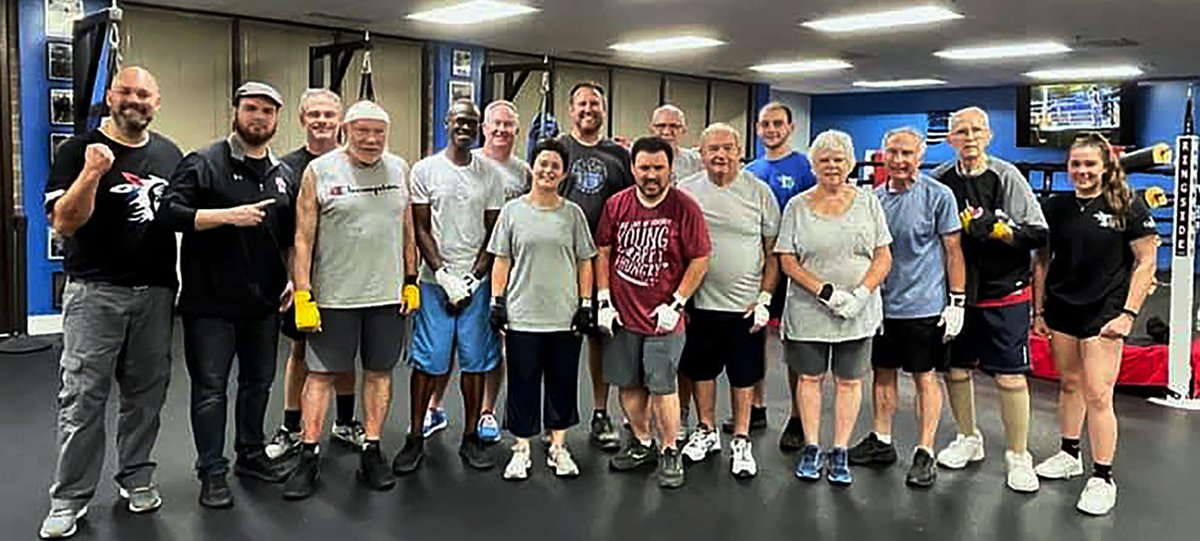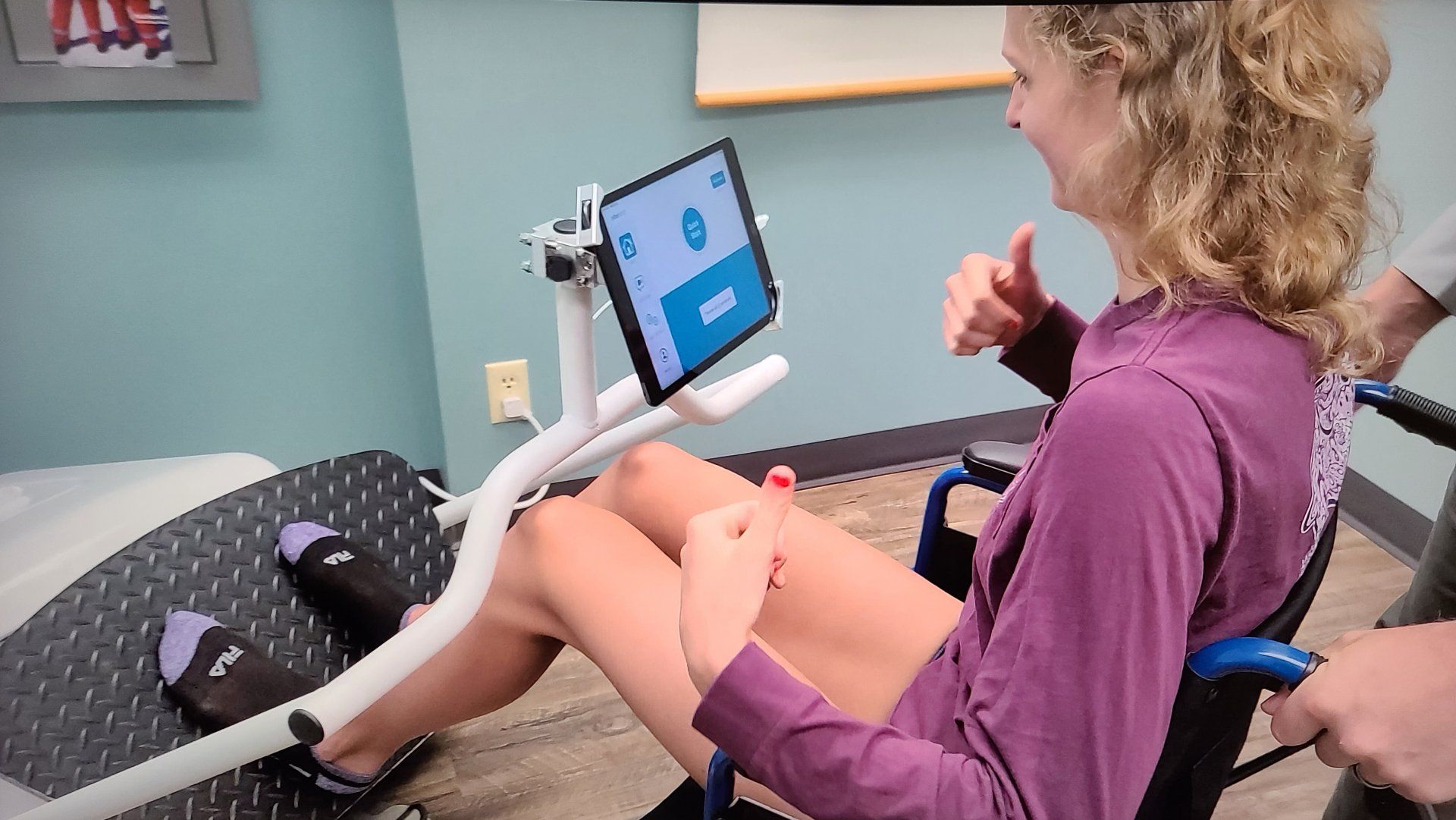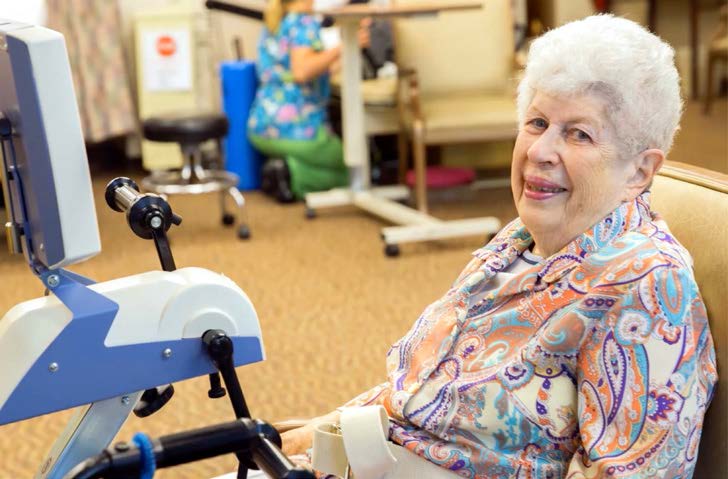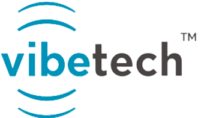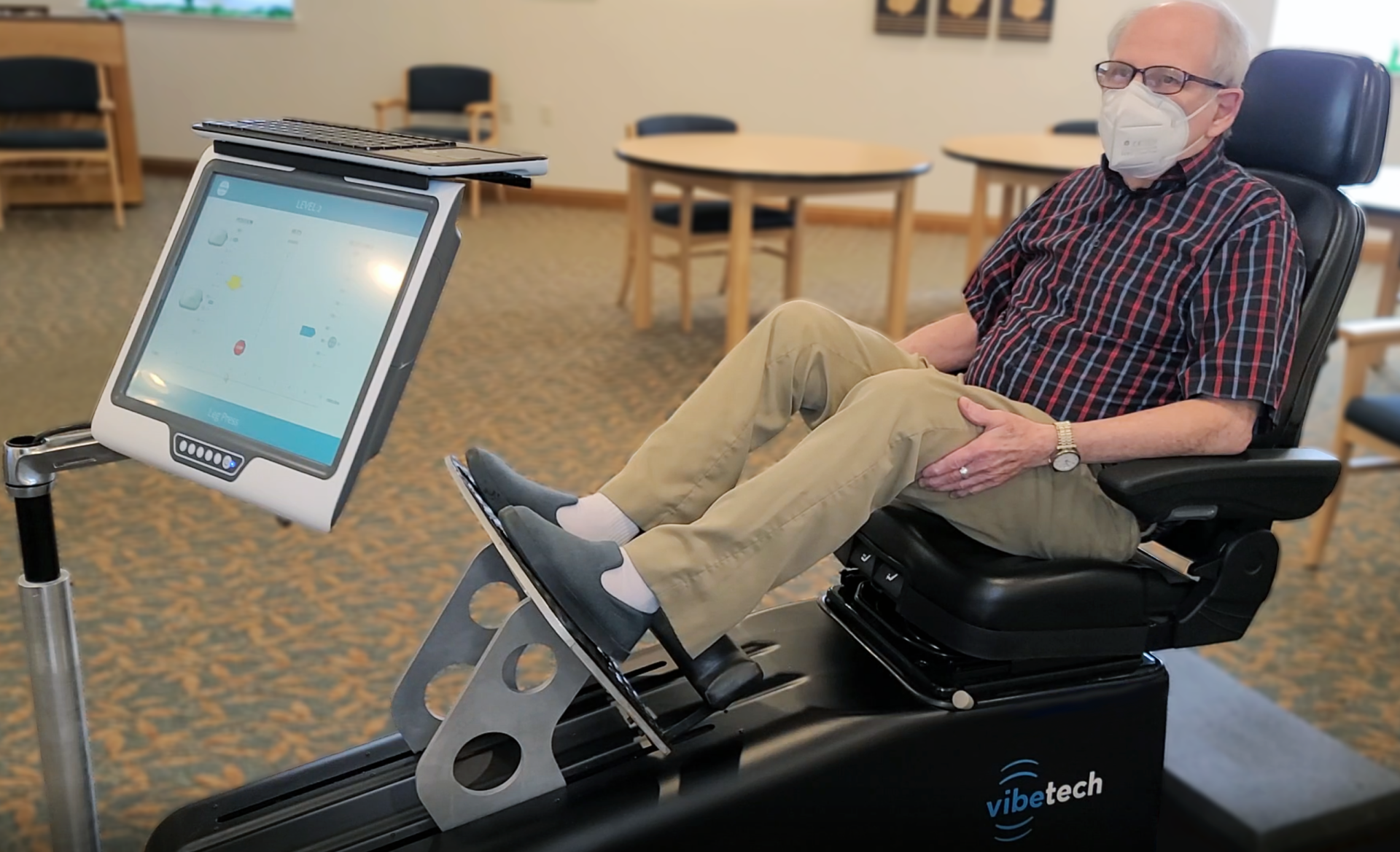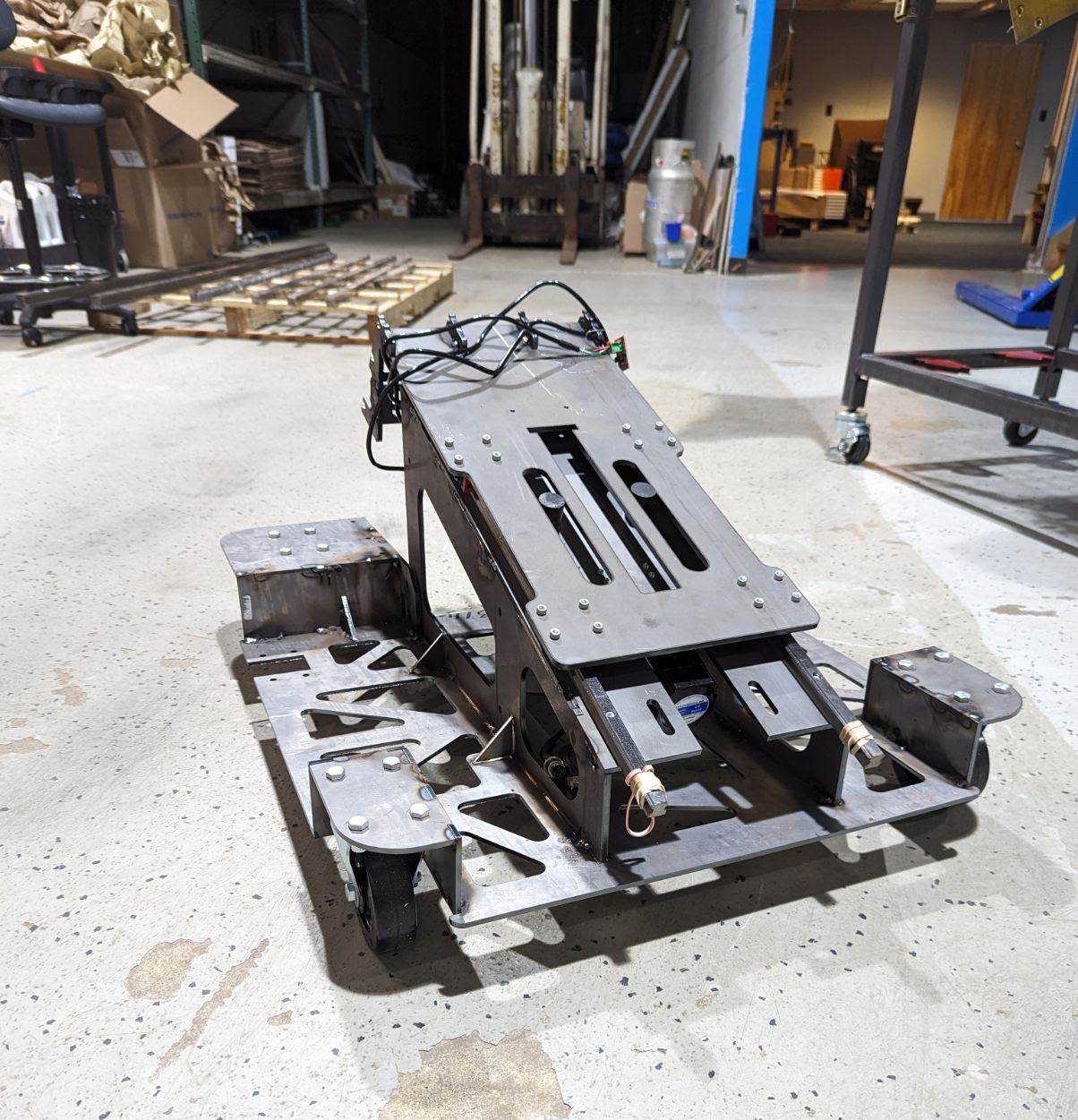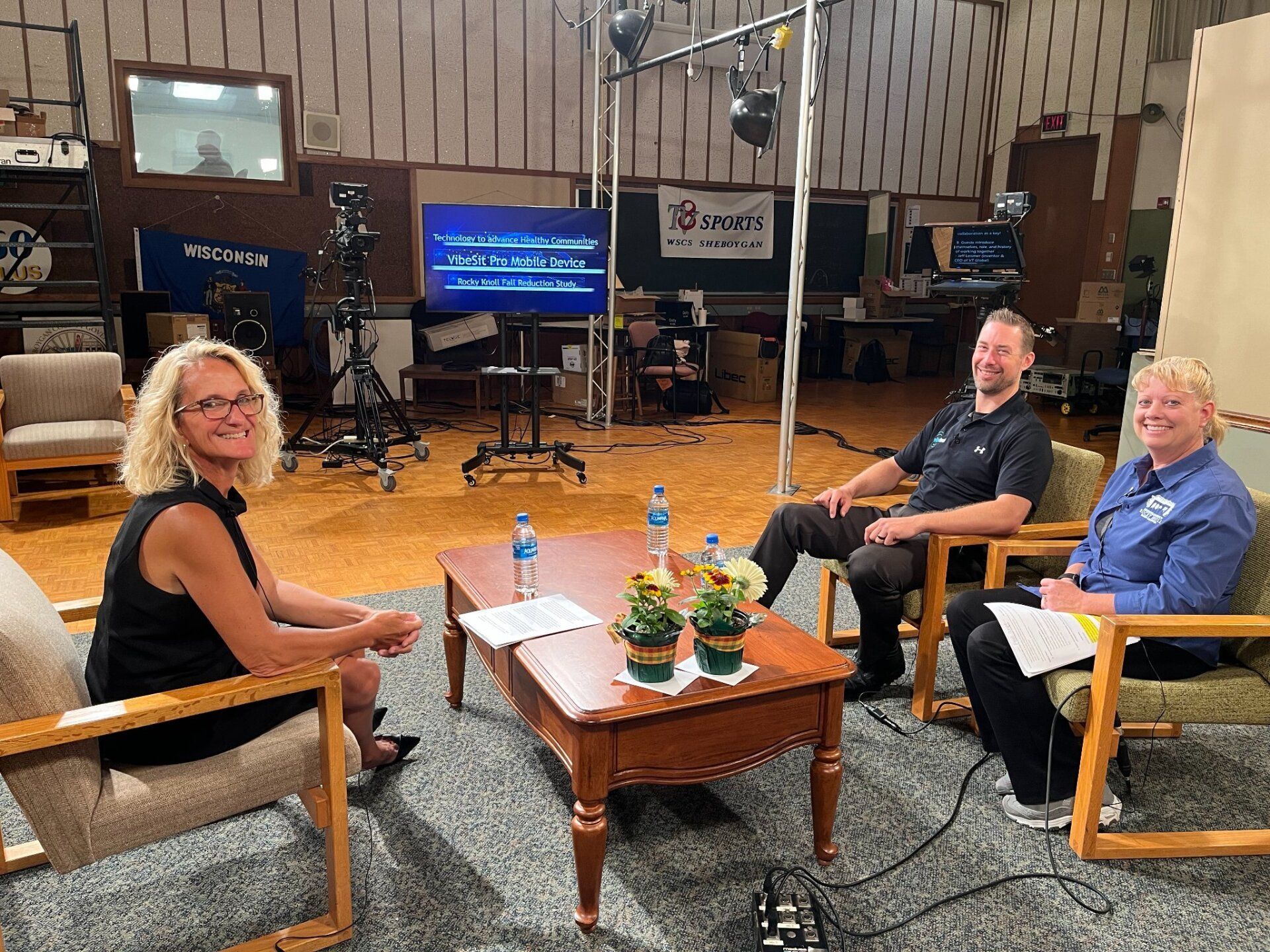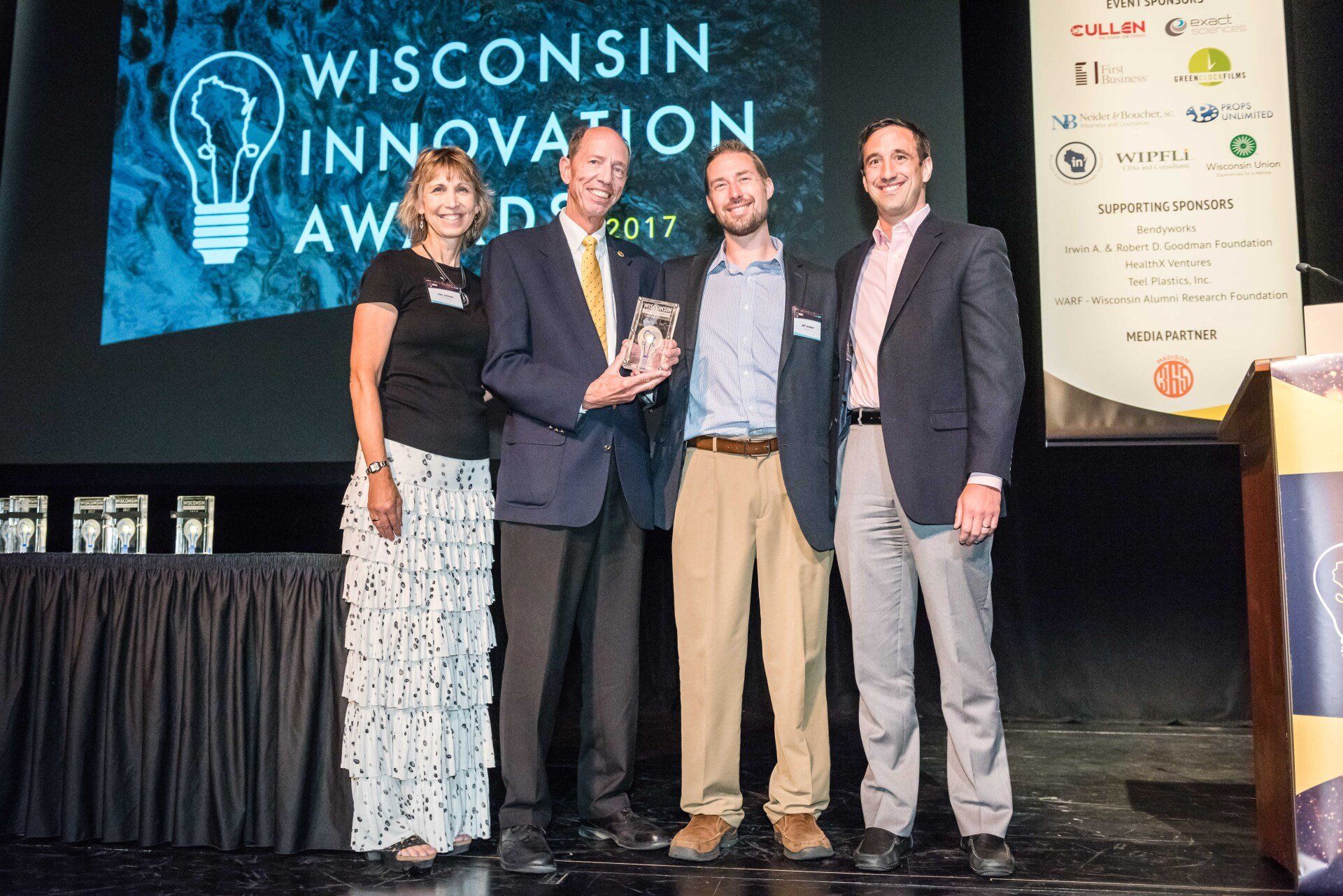V I B E T E C H N E W S & U P D A T E S
Published by: Jeff Pederson • May 28, 2021
VibeTech launches study at Landmark Square
VibeTech recently joined forces with Landmark Square independent living condominiums in Sheboygan, Wis. to conduct a 12-week therapeutic vibration study targeting the lower body and designed to help older adults in preventing falls and increasing mobility.
In early February, 36 Landmark Square residents volunteered to participate in the 12-week program, which wrapped up on May 11.
“We made the study available to everyone and we received 36 positive responses,” Landmark Square President Jim Holmes said. “The study was set up with one person using the machine with one facilitator from VibeTech in a one-on-one environment with both wearing masks.
“I firmly believe that quite a few people will benefit from VibeTech’s therapeutic vibration device and we are already seeing a lot of positives come from the program with our residents having this as something to look forward to, which also makes them feel good and improves their level of mobility,” he said.
Holmes himself has been among the participants in the study and has already noticed a difference in his level of mobility.
“I’ve had times when I dropped my keys, for instance, and had trouble getting down to get them,” Holmes said. ‘Since I’ve starting using the VibeTech device, I’ve notice improved range of motion, especially with my bending motion.
“Using the machine makes me feel good that I’m not depending on anything but my own mobility to get around and do things like bend over to pick up my keys. My feeling is that there are a lot of people that really need this and will benefit from it greatly.”
Holmes is very optimistic about the impact VibeTech’s therapeutic vibration technology can make for those with mobility issues.
“I met VibeTech CEO and Founder Jeff Leismer at an Alzheimer’s Advocacy Day event in Madison two years ago,” Holmes said. “He told me about VibeTech’s development of therapeutic vibration technology that is focused on helping older adults with reducing falls and increase their level of mobility.
“It sounded like a very intriguing concept and he also mentioned his goal of getting his therapeutic vibration device into nursing homes and senior independent living homes, like ours,” he said. “It hit home with me because we have 18-20 people at Landmark that use walkers. We had talked about doing a study with our residents, but it kind of went to the backburner when COVID hit last March. However, around the start of the year we got in contact again and it seemed to be a good time to get it going, so in February we launched the three-month study at Landmark Square.”
Other participants in the Landmark Square therapeutic vibration program echoed Holmes’ remarks, including 80-year-old Landmark Square resident Henry Lipman, who regularly uses a walker.
“I’ve lived at Landmark Square for five years now and I love it here,” Lipman said. “I work at Festival Foods as a bagger and they won’t let me sit down when I work.
“Before I started in this program, I couldn’t stand for more than one hour,” he said. “Since I’ve seen in the program, I can stand for my full two-and-half-hour shift. Outside of working at Festival Foods, I formed at bike club at Landmark Square and we ride tricycles around the parking lot here nearly every day. It has felt great to ride my tricycle after my treatments as part of the VibeTech program.”
Lipman says being part of the VibeTech program has helped to raise his spirits and activity level during the COVID-19 pandemic.
“Many of us have been locked up in our condos during COVID, which hasn’t been fun at all,” Lipman said. “A lot of people have been going crazy dealing with this pandemic.
“Doing extra activity as part of the program has helped me a great deal,” he said. “I would highly recommend it to others. Everyone I work with at Festival are teenagers. I am trying to keep up with them and I’m really happy to be able to stand for my entire two-and-half-hour shift. It has been awesome.”
Joyce Anderson, who is part of the program’s control group, has also enjoyed her involvement.
“I honestly was disappointed that I was in the control group and not picked to benefit from the treatment of the program,” Anderson said. “I know being in the control group, I can help in gathering meaningful information for the VibeTech study.”
“I understand that tracking the results of both the control and treatment groups will prove to benefit in developing VibeTech’s therapeutic vibration product in the future,” she said. “I use the VibeTech device once a week for 15 minutes. I sit on the machine and push with my legs. Then I do nothing for 10 minutes. My husband, Michael, is part of the treatment group and I have seen how it has helped him, which has been so great to experience. He has very bad knees and his muscles hurt often, which makes it difficult for him to walk. Since he started the program, he has been walking faster and leaving his walker behind, which he never used to do. His confidence has really been boasted.”
Michael Anderson admits to being hesitant about the program at first.
“I was curious about the program when I first hear about it, but I wasn’t sure what it would actually do for me,” Michael Anderson said. “Since I started the program, I noticed that I was very tired right after the treatment, but then I start feeling better two days after the treatment. I have been walking farther on my own and forgetting about the walker.
“We’ve actually been walking downtown and to the arts center, which is about four or five blocks,” he said. “My goal is to walk to the lake, which is a lot of up and downhill. I think I can do it though. I have a disease that makes me lose my balance often, and the program is helping me with my balance issue.”
According to Leismer, the positive impact the of being involved in the therapeutic vibration study has been significant.
“We just did our first monthly assessment based on the data that we've gathered from intake to the completion of the first month of the program and we've found that Michael has been doing incredibly well,” Leismer said. “In our assessment process, which measures walking speed, range of motion, ability to get up from a chair and overall balance, Michael has progressed from a rating of three out of 12 at the beginning to nine out of 12 at the most recent session. An improvement of one is considered clinically significant, so Michael is actually now at a level of improvement that is six times what is considered to be clinically significant. That is testimony to what therapeutic vibration can do to help people improve their mobility.”
Leismer is pleased to be able to offer quick feedback on the program, which can in turn help Landmark Square residents, as well as their family care provider and physician.
“It is nice to be able to see the progress in real time,” Leismer said. “It is helpful to track that kind of like looking at the stock market. As the numbers improve, we've seen that residents feel better and are able to do more.
“They are also able to share these results with four family care provider and their doctor, which is very helpful as well,” he said.
Leismer and VibeTech Clinical Liaison Deb Jacoby have been responsible for carrying out the one-on-one sessions with Landmark Square residents.
“Deb did the majority of treatments at Landmark Square for VibeTech and I have done some as well,” Leismer said. “We were at Landmark Square two days a week to cover all 36 folks involved. This is the first study that we've done at an independent living care setting. The statistical results that we gather will also help to give me ideas for future tech updates to our VibeTech therapeutic vibration devices.”
With phase 1 in the books, Leismer and Jacoby are currently moving into the next phase of the study.
"We are now embarking on phase 2 of the study with all participants from both the treatment and control group receiving treatments to see if we can positively change the trends on their strength and mobility from what we tracked the first 12 weeks of the study,” Leismer said. “We are seeing if adding a second session each week improves trends for the treatment group compared to what we saw during phase 1 of the study when only one 10-minute treatment was provided each week.”
According to Leismer, the study is aiding VibeTech’s progress in putting a new software program to use aimed at providing real-time feedback.
“Another benefit of this study is that it is helping us develop a new software tool to monitor progress of VibeTech care recipients to give the care recipient and those involved with their care real-time insights into their health trends,” Leismer said. “This type of data can help with managing care for the individual receiving treatments. It can also help in motivating them to continue to work hard to improve their quality of life by using a new, simple to perform therapeutic vibration treatment to improve their strength and mobility, while alleviating any aches and pains they have, which prevent them from participating in the physical activities they love to perform or that they need to stay fit or to restore their independence.”
